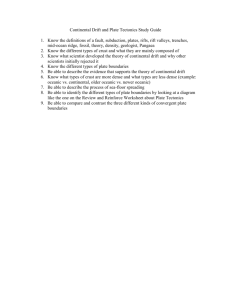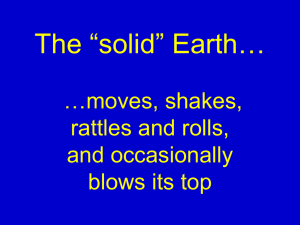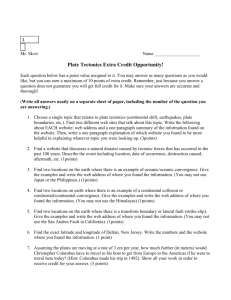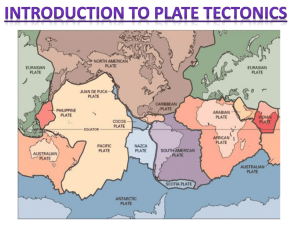Earthquakes
advertisement
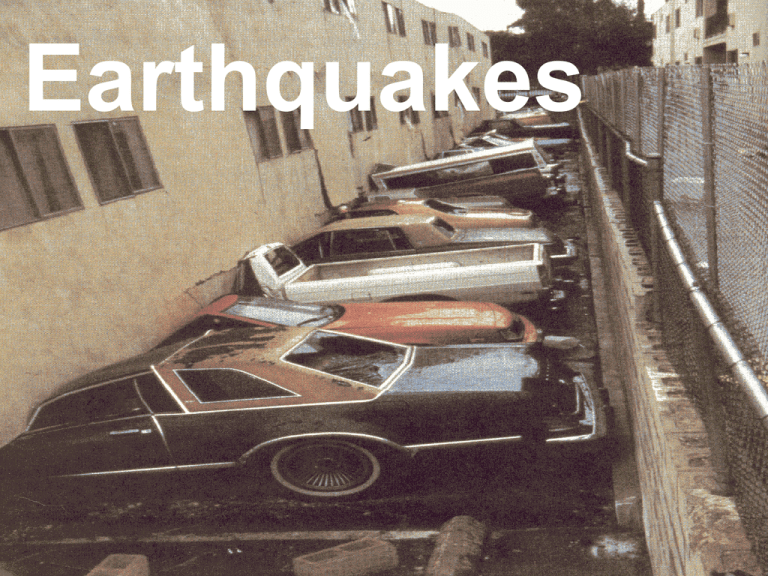
Earthquakes Earth’s Hypsometry and Topography Continental Shields Crustal Formation Figure 9.5 North American Terranes Much of Vancouver Island was once found near the equator Two types of crust “float” on the upper mantle 1. Oceanic crust (heavier, sinks lower) 2. Continental crust (lighter, floats higher) Three types of plate convergence 1. Oceanic – continental 2. Oceanic – oceanic 3. Continental - continental Oceanic – continental plate convergence Nazca plate – South America plate Oceanic – oceanic plate convergence New Hebrides Trench near Vanuatu Continental – continental plate convergence India/Eurasia plate collision (forms Himalayan Mountains) Stress build-up and release Earthquake Motion Horst and Graben: faulted blocks Historical seismic activity in Canada Haiti Earthquake: January 2010 1906 San Francisco Earthquake San Andreas Fault Mercalli Richter 1964 Alaska earthquake damage map: modified Mercalli scale III - IV V VI VII VIII - X Liquefaction and slumping Anchorage, Alaska - 1964 Earthquake-proof buildings •Pressure is not always great enough or abrupt enough to cause faulting (earthquakes). •Deformation occurs (FOLDING) if pressure does not exceed the internal strength of the rock or if it becomes plastic (hot). •Tensional stress produces thinning crust, folding and normal faults •Compressional stress produces thickening crust, folding and reverse faults •Shearing stress produces horizontal bending and strike-slip faults Zagros Crush Zone Domes and Basins Figure 9.10 Is a major earthquake in California, Alaska or Japan of any concern thousands of kilometers away, in Hawaii? Hint: In Fall 2004, no one answered this question, but many could in Spring 2005. (seismic wave) Source: CTV, Jan 2005 December 2004 Tsunami: Indonesia, Thailand, Sri Lanka The power of a tsunami



